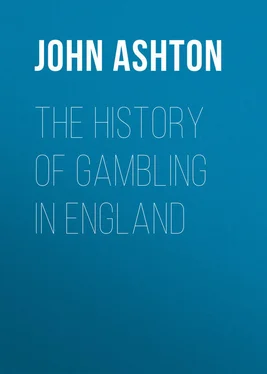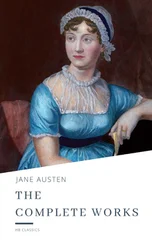John Ashton - The History of Gambling in England
Здесь есть возможность читать онлайн «John Ashton - The History of Gambling in England» — ознакомительный отрывок электронной книги совершенно бесплатно, а после прочтения отрывка купить полную версию. В некоторых случаях можно слушать аудио, скачать через торрент в формате fb2 и присутствует краткое содержание. Жанр: foreign_antique, foreign_prose, на английском языке. Описание произведения, (предисловие) а так же отзывы посетителей доступны на портале библиотеки ЛибКат.
- Название:The History of Gambling in England
- Автор:
- Жанр:
- Год:неизвестен
- ISBN:нет данных
- Рейтинг книги:5 / 5. Голосов: 1
-
Избранное:Добавить в избранное
- Отзывы:
-
Ваша оценка:
- 100
- 1
- 2
- 3
- 4
- 5
The History of Gambling in England: краткое содержание, описание и аннотация
Предлагаем к чтению аннотацию, описание, краткое содержание или предисловие (зависит от того, что написал сам автор книги «The History of Gambling in England»). Если вы не нашли необходимую информацию о книге — напишите в комментариях, мы постараемся отыскать её.
The History of Gambling in England — читать онлайн ознакомительный отрывок
Ниже представлен текст книги, разбитый по страницам. Система сохранения места последней прочитанной страницы, позволяет с удобством читать онлайн бесплатно книгу «The History of Gambling in England», без необходимости каждый раз заново искать на чём Вы остановились. Поставьте закладку, и сможете в любой момент перейти на страницу, на которой закончили чтение.
Интервал:
Закладка:
During Sig. Lanciani’s lifetime, a hundred, or more, tables have been found in Rome, and they belong to six different games of hazard; in some of them the mere chance of dice-throwing was coupled with a certain amount of skill in moving the men. Their outline is always the same: there are three horizontal lines at an equal distance, each line containing twelve signs – thirty-six in all. The signs vary in almost every table; there are circles, squares, vertical bars, leaves, letters, monograms, crosses, crescents and immodest symbols: the majority of these tables (sixty-five) contain words arranged so as to make a full sentence with the thirty-six letters. These sentences speak of the fortune, and good, or bad, luck of the game, of the skill and pluck of the players, of the favour, or hostility, of bystanders and betting men. Sometimes they invite you to try the seduction of gambling, sometimes they warn of the risks incurred.
Children were initiated into the seductions of gambling by playing “nuts,” a pastime cherished also by elder people. In the spring of 1878 a life-size statuette of a boy playing at nuts was discovered in the cemetery of the Agro Verano, near St Lorenzo fuori le mura. The statuette, cut in Pentelic marble, represents the young gambler leaning forward, as if he had thrown, or was about to throw, the nut; and his countenance shows anxiety and uncertainty as to the success of his trial.
The game could be played in several ways. One, still popular among Italian boys, was to make a pyramidal “castle” with four nuts, three at the base and one on the top, and then to try and knock it down with the fifth nut thrown from a certain distance. Another way was to design a triangle on the floor with chalk, subdividing it into several compartments by means of lines parallel to the base; the winnings were regulated according to the compartment in which the nut fell and remained. Italian boys are still very fond of this game, which they call Campana , because the figure drawn on the floor is in the shape of a bell: it is played with coppers. There was a third game at nuts, in which the players placed their stakes in a vase with a large opening. The one who succeeded first in throwing his missile inside the jar would gain its contents.
They also tossed “head or tail,” betting on which side a piece of money, thrown up in the air, would come down. The Greeks used for this game a shell, black on one side, white on the other, and called it “Night or day.” The Romans used a copper “ as ” with the head of Janus on one side, and the prow of a galley on the other, and they called their game Capita aut navim (head or ship).
Mahomet discountenanced gambling, as we find in the Koran (Sale’s translation, Lon. 1734), p. 25. “They will ask thee concerning wine and lots. Answer: In both there is great sin, and also some things of use unto men; but their sinfulness is greater than their use.” Sale has explanatory footnotes. He says “Lots. The original word, al Meiser , properly signifies a particular game performed with arrows, and much in use with the pagan Arabs. But by Lots we are here to understand all games whatsoever, which are subject to chance or hazard, as dice, cards, &c.” And, again, on p. 94. “O true believers, surely wine, and lots, and images, and divining arrows are an abomination of the work of Satan; therefore avoid them, that ye may prosper.”
À propos of this denunciation of gambling in the Koran, is the following highly interesting letter of Emmanuel Deutsch, in the Athenæum of Sep. 28, 1867: —
“It may interest the writer of the note on κυβεια (Eph. iv. 14), (the only word for ‘gambling’ used in the Bible) in your recent ‘Weekly Gossip,’ to learn that this word was in very common use among Paul’s kith and kin for ‘cube,’ ‘dice,’ ‘dicery,’ and occurs frequently in the Talmud and Midrash. As Aristotle couples a dice player (κυβευτης) with a ‘bath robber’ (λωποδυτης), and with a ‘thief’ (ληστης – a word no less frequently used in the Talmud); so the Mishnah declares unfit either as judge or witness ‘a κυβεια-player, a usurer, a pigeon-flyer (betting man), a vender of illegal (seventh year) produce, and a slave.’ A mitigating clause – proposed by one of the weightiest legal authorities, to the effect that the gambler and his kin should only be disqualified ‘if they have but that one profession’ – is distinctly negatived by the majority, and the rule remains absolute. The classical word for the gambler, or dice player, appears aramaized in the same sources into something like kubiustis , as the following curious instances may show. When the Angel, after having wrestled with Jacob all night, asks him to let him go, ‘for the dawn hath risen,’ Jacob is made to reply to him, ‘Art thou a thief, or a kubiustis , that thou art afraid of the day?’ To which the Angel replies, ‘No, I am not; but it is my turn to-day, and for the first time, to sing the Angelic Hymn of Praise in Heaven: let me go.’”
In another Talmudical passage, an early Biblical critic is discussing certain arithmetical difficulties in the Pentateuch. Thus, he finds the number of the Levites (in Numbers) to differ, when summed up from the single items, from that given in the total. Worse than that, he finds that all the gold and silver contributed to the sanctuary is not accounted for; and, clinching his argument, he cries, “Is then your Master, Moses, a thief or a kubiustis ?” The critic is then informed of a certain difference between “sacred” and other coins, and he further gets a lesson in the matter of Levites and First-born, which silences him. Again, the Talmud decides that if a man have bought a slave who turns out to be a thief or a kubiustis – which has been erroneously explained to mean a “man-stealer” – he has no redress. He must keep him, as he bought him, or send him away, for he bought him with all his vices.
No wonder dice-playing was tantamount to a crime in those declining days. There was, notwithstanding the severe laws against it, hardly a more common and more ruinous pastime – a pastime in which Cicero himself, who places a gambler on a par with an adulterer, did not disdain to indulge in his old days, claiming it as a privilege of “Age.” Augustus was a passionate dice-player. Nero played the points – for they also played it by points – at 400,000 sesterces. Caligula, after a long spell of ill-luck, in which he had lost all his money, rushed into the streets, had two innocent Roman knights seized, and ordered their goods to be confiscated. Whereupon he returned to his game, remarking that this had been the luckiest throw he had had for a long time. Claudius had his carriages arranged for dicing convenience, and wrote a work on the subject. Nor was it all fair play with those ancients. Aristotle already knows of a way by which the dice can be made to fall as the player wishes them; and even the cunningly constructed, turret-shaped dice cup did not prevent occasional “mendings” of luck. The Berlin Museum contains one “charged” die, and another with a double four. The great affection for this game is seen, among other things, by the common proverbs taken from it, and the no less than sixty-four names given to the different throws, taken from kings, heroes, gods, hetairæ, animals, and the rest. But the word was also used in a mathematical sense. In a cosmogonical discussion of the Midrash, the earth is likened to a “cubus.”
The use of dice in England is of great antiquity, dating from the advent of the Saxons and the Danes and Romans; indeed, all the northern nations were passionately addicted to gambling. Tacitus ( de Moribus Germ. ) tells us that the ancient Germans would not only hazard all their wealth, but even stake their liberty upon the throw of the dice; “and he who loses submits to servitude, though younger and stronger than his antagonist, and patiently permits himself to be bound, and sold in the market; and this madness they dignify by the name of honour .”
Читать дальшеИнтервал:
Закладка:
Похожие книги на «The History of Gambling in England»
Представляем Вашему вниманию похожие книги на «The History of Gambling in England» списком для выбора. Мы отобрали схожую по названию и смыслу литературу в надежде предоставить читателям больше вариантов отыскать новые, интересные, ещё непрочитанные произведения.
Обсуждение, отзывы о книге «The History of Gambling in England» и просто собственные мнения читателей. Оставьте ваши комментарии, напишите, что Вы думаете о произведении, его смысле или главных героях. Укажите что конкретно понравилось, а что нет, и почему Вы так считаете.












